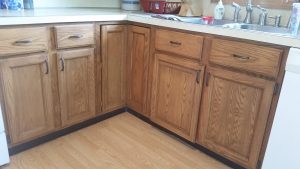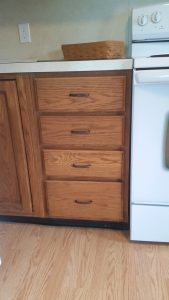 This past Wednesday, I woke up and did what many of you likely did: I looked out the window. I had listened to the weather reports all week and I wanted to see if we received as much snow as the Doomsayers had predicted.
This past Wednesday, I woke up and did what many of you likely did: I looked out the window. I had listened to the weather reports all week and I wanted to see if we received as much snow as the Doomsayers had predicted.
Unfortunately, I couldn’t see much from the window–it looked bad, but not as bad as I had feared. So, buoyed with hopeful thoughts, I got dressed, put on my gloves, my little snowpants, my little coat and hat and all that stuff and headed outside to snowblow and clean out the driveway.
However, when I got outside, I very quickly realized that the situation was infinitely worse than I had thought: my car was buried so deep I couldn’t open the doors. My shovel (and here I’d like to give a special thank you to my children) was in the yard. Somewhere. Beneath 20 inches of snow. Thankfully, we have a second shovel.
Unfortunately, it too was in the yard. Somewhere. Beneath 20 inches of snow.
Well, after my initial . . . shall we say, disappointment . . . I decided it was alright. Everything was cool. Everything was groovy. I mean really, with all that snow, I wasn’t going to be digging my way out anyway, right? Right. That’s why I have a snowblower.
And so I marched (like Frodo in the Lord of the Rings) through a vast expanse of waist-deep snow, all the way to our little storage barn. After a brief (and occasionally loud) struggle, I managed to muscle open the doors, only breaking them a little. But I didn’t care about that. I didn’t care about doors that were only a little bit broken because I was staring at my snowblower: a machine of glory and power–a machine that would soon free my driveway from the clutches of . . . well you get the idea.
Anyway, I reached for the pull cord to power the machine into action and remembered something sad: two weeks ago I had ripped off the pull-cord that starts the blower. So, no pull-starting it. I’d have to use the electric start. So no big deal, right? No big deal.
Well, not exactly. See, there was a slight problem: my cord for the electric start was 10 feet long and my power outlet was sixty feet (through waist-deep, Lord of the Rings, Epic snow) away.
Well, never being one to think overly long about a problem, I did what any guy would do: I started dragging the snowblower backwards through the all that snow. I went all of about 4 feet when I realized I’d never make it alive. And then (finally) my brain kicked in and said “Dummy. Go get your shovel.”(I think, though I’m not yet sure, that my brain was messing with me).
So I slapped my forehead and said out loud, “my shovel! I’ll shovel out a path to the power outlet!” I belly-crawled through the snow all the way to where I’d left my shovel only to remember that very sad truth I relayed earlier: my shovels were (thanks again, kids) buried in the yard somewhere.
At this point, anger and sadness were descending on me, burying my spirits quicker and more effectively than the snow had taken care of my tools, but I dug deep and (after kicking the trashcan and falling down in a snowdrift and hitting my head on the van when I fell over), I went back to dragging the snowblower towards the house.
Yeah, I pulled on that thing like I was a little Hercules and managed to drag it another 4 feet before I felt what could only be the onset of 4 hernias and a heart attack.
Sitting down in the snow, holding my side, huffing and puffing, inspiration FINALLY struck: my power cord was 10 feet long and the power outlet was still about 52 feet away . . . but I had something in my basement that we in the modern world call an extension cord.
So I ran in, grabbed the cord and in minutes had started the snowblower. But, sadly, that was only half the battle. Now I had to somehow blow all this snow away.
Well, for the longest time (and this is the whole point of this story) I just stood there, breathing the fumes coming off the snowblower and wondering how long it would take just for Spring to melt it all. The job, now that I was finally ready to start it, seemed too big. Too enormous. Too overwhelming. I seriously wondered if I’d even be able to get it with the snowblower. I moved my hand to the throttle of the machine, fully intending to shut it down and just go in the house and think about it for a while.
But then, just before I did that–before utter helplessness kicked in and took over–I put the blower in gear and cleared a 2 foot section.
It was a start.
I then wiggled the machine around and cleared out another section. Before long, I had an eight foot section cleared and I’d found one of the shovels. Or, at least most of it.
From there, I chipped away at the driveway. It didn’t go smoothly and it didn’t go quickly, but I got it done. Eventually.
And that brings me back to what I started writing about the other day: de-cluttering our fat homes. See, in the next few days, I’ll be writing about some tried and true tricks to getting your house de-cluttered. But before I start that, I want to start by focusing on very first problem we all need to overcome when attempting to get the clutter out of our homes: the paralysis brought about by the immensity of the job.
See, just as I stared at the driveway and almost didn’t know where to begin, many of us do the same thing when it comes to de-cluttering our homes. The job looks too huge. We stand there and stare at it and wonder if there’s any possible way to accomplish all the work. We almost become paralyzed.
Well, the first tip I’m going to give you is buried in the snow story: start small. Start with that first 2 foot section if you have to, but find somewhere to start and start.
Don’t waste your time staring. Don’t waste your time and your energy gawking at the work. If you do that, you’ll never start. You’ll talk yourself right out of it.
Don’t look at the attic and basement and closets and the cupboards and the drawers and the dressers that need to be sorted and organized. Start with a single box in a single closet and focus on that, organize that. Then move on to the next one. Before long, the closet will be done and you’ll be able to close the door and move on to another one. When that one’s done, you’ll be able to move on to the next and so on.
Eventually, you’ll work your way through it all. But only if you start. That’s the first step: start. That’s the way to defend against the paralysis.
Next time we’ll talk about some tips and tricks to help you with the actual work.







 I’m a “dreader”. That’s not a word–I know that. But that doesn’t change the truth: I dread things. On a regular basis.
I’m a “dreader”. That’s not a word–I know that. But that doesn’t change the truth: I dread things. On a regular basis.
 The thought of tackling a painting project doesn’t always fill us with excitement. In fact, a lot of us dread these “weekend-killers.” Many of us don’t get all warm and fuzzy over the thought of spending tons of time painting. At least I know I don’t.
The thought of tackling a painting project doesn’t always fill us with excitement. In fact, a lot of us dread these “weekend-killers.” Many of us don’t get all warm and fuzzy over the thought of spending tons of time painting. At least I know I don’t.
 This past Wednesday, I woke up and did what many of you likely did: I looked out the window. I had listened to the weather reports all week and I wanted to see if we received as much snow as the Doomsayers had predicted.
This past Wednesday, I woke up and did what many of you likely did: I looked out the window. I had listened to the weather reports all week and I wanted to see if we received as much snow as the Doomsayers had predicted.


